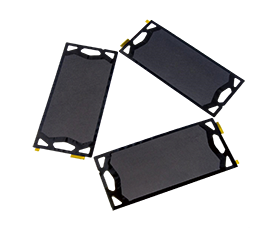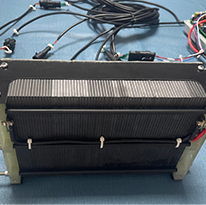يُعدّ غشاء MEA، القائم على تقنية CCM، التجميع الرئيسي لخلايا وقود الهيدروجين النبضية (PEMFC)، وهو قلب خلية وقود الهيدروجين، والمكان الأمثل لتحويل المواد الكيميائية إلى طاقة كهربائية. وقد وصل غشاء MEA إلى مستوى متقدم عالميًا، وحصل على جائزة جنيف الدولية للاختراعات. غشاء MEA خماسي الطبقات مع طبقات انتشار الغاز المدمجة (GDL) للاستخدام في خلايا وقود الهيدروجين/الهواء. يُعدّ من أكثر غشاء MEA فعالية من حيث التكلفة والفعالية في السوق.
وسم :
Rubriتصنيف انتاج الطاقة :
5kW -200kWوصف المنتج

الشرق الأوسط وأفريقيا، استنادًا إلى تقنية CCM، هو التجميع الرئيسي لـ PEMFC، وهو قلب خلية وقود الهيدروجين، وهو المكان المناسب لتحويل المواد الكيميائية إلى طاقة كهربائية.
حصلت شركة Gatechn مؤخرًا على كثافة طاقة تصل إلى 0.65 فولت عند 2300 مللي أمبير/سم²، وهي أعلى كثافة طاقة في العالم، وحصلت على جائزة جنيف الدولية للاختراعات. مجموعة أقطاب غشاء خماسية الطبقات (MEA) مزودة بطبقات انتشار غازية مدمجة (GDL) للاستخدام في خلايا وقود الهيدروجين/الهواء. تُعد هذه المجموعة من أكثر مجموعات الأقطاب الغشائية فعالية من حيث التكلفة والكفاءة. السوق.
مقدمة المنتج
تُعد مجموعة أقطاب غشاء خلية وقود الهيدروجين (MEA) مكونًا أساسيًا في خلية وقود غشاء تبادل البروتون (PEMFC). تتكون من عدة طبقات تعمل معًا لتسهيل التفاعلات الكهروكيميائية التي تُولّد الكهرباء من التفاعل الكيميائي بين الهيدروجين والأكسجين. فيما يلي تفصيل للمكونات وأدوارها داخل مجموعة أقطاب غشاء الخلية:
١. طبقة المحفز: تحتوي MEA على طبقتين من المحفز، واحدة على كل جانب. تُسهّل طبقة المحفز الأنود الأكسدة الكهروكيميائية للهيدروجين (H2) إلى بروتونات (H+) وإلكترونات (e-). تُعزز طبقة المحفز الكاثود اختزال الأكسجين (O2).
في الماء (H2O) عن طريق قبول البروتونات والإلكترونات. محفز تم تطويره ذاتيًا بواسطة شركتنا. اتساق عالي: توزيع موحد لحجم جسيمات النانو. خواص كهروكيميائية عالية النشاط: ECSA وMA مرتفعان نسبيًا. متانة جيدة: باستخدام تقنية التلدين في درجات حرارة عالية، يزيد عمر المحفز.
| نموذج | HPM-H151N |
| تحميل PGM للمحفز (ملغ/سم³) | 0.45/0.35 |
| الأداء في المكدسات (W/cm') | >1.5 |
| متانة المحفز في MEA | دورات من 0.6 إلى 0.95 فولت مع فقدان الجهد < 30 مللي فولت عند 0.8 أمبير/سم² وخسارة ECSA <40% |
| محفز يدعم المتانة في منطقة الشرق الأوسط وأفريقيا | دورات من 1 إلى 1.5 فولت مع فقدان الجهد < 30 مللي فولت عند 1.5 أمبير/سم2 وفقدان ECSA <40% |
سيناريوهات الاستخدام المتعددة

يمكن استخدام خلية وقود الهيدروجين في سيناريوهات مختلفة:
1. أبحاث خلايا وقود PEM
2. تجربة خلية وقود الهيدروجين
3. عرض توضيحي لطاقة الهيدروجين الخضراء
4. دراجة/سكوتر/دراجة نارية تعمل بخلايا الوقود
5. طائرات الهيدروجين بدون طيار / مركبات الهيدروجين بدون طيار
6. محطة طاقة هيدروجينية محمولة
-------------------------------------------------------------------